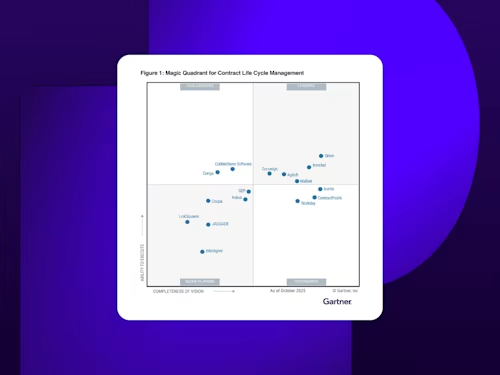
Bridging the Gap Between the Digital and In-Branch Experience for Financial Consumers
Banks and credit unions are at a crossroads as they chart the future of their branch ecosystem.

Banks and credit unions are at a crossroads as they chart the future of their branch ecosystem.
Looking at the data, it’s easy to conclude that branches matter less in today’s digital-first age. A record number of branches have shuttered over the last few years—falling from roughly 85,000 in the early 2010s down to just 71,000 today.
This pattern accelerated during the early years of the pandemic, as the increasing popularity of remote transacting coupled with rising operational costs drove several institutions to divest their higher-cost locations.
But branches continue to serve important roles as cornerstones of the community and flagships that help raise the brand profile of banks and credit unions. The branch is also ideal for fostering long-lasting and profitable relationships with customers and members, and can serve as a “deposit-gathering machine.” A 2022 Celent study found that the branch remains the top sales channel for financial institutions, accounting for roughly 60% of new-to-bank sales. For these reasons, many large and small financial institutions are strategically expanding their branch networks in carefully chosen locations.
For example, JP Morgan Chase has opened 650 new branches in the past five years (while also consolidating 500), enabling its expansion into 25 new states over that time. Meanwhile, Bank of America announced plans to open branches in nine new markets over the next four years, with 58 openings slated for 2023 alone.
Not to be left behind, mid-sized regional credit unions like Georgia United CU and MidFlorida CU are investing heavily in their branch networks. And the New York-based Corning Credit Union opened two new branches in Horry County, North Carolina, in 2022, continuing its years-long southern expansion strategy focused on the coastal Carolina market.
Branch strategy evolves to meet customer expectations
In many cases, these aren’t your grandparents’ bank branches.
In the digital age, the modern bank branch will and should look very different from those of the past. Banking leaders are embracing newer branch designs as customers grow ever more comfortable conducting routine transactions via digital and mobile channels. These floorplans largely forgo the traditional clinical spaces built around teller lines in favor of more interactive, welcoming environments.
Such relationship-focused branch designs leverage advanced, self-service technologies like ATMs, interactive teller machines (ITMs) and teller cash recyclers (TCRs) to drive efficiency and reduce the costs of routine transactions.
In addition, many of these newer branch layouts incorporate innovative staffing models, such as the use of universal associates (alternatively known as universal bankers or member service representatives) and tablet-enabled staff that rely heavily on technology to build customer relationships.
Digital agreements enable self-service goals
As banks and credit unions spend millions to upgrade and redesign their branch networks for the digital age, the “last mile” of customer engagement is digitizing paper documents and agreements. Branch visitors are seeking the benefits of in-person engagement without all the inconvenient hassles like long lines and tedious paperwork.
Many financial interactions—whether at the teller line or with a personal banking representative—require the customer to sign or accept some type of agreement. These include a range of scenarios, including account withdrawals and transfers, applying for a new loan or credit card, opening a deposit account or submitting a fraud claim.
For this reason, as financial institutions strategize their goals for enabling self-service within the branch context, creating seamless experiences for those interactions involving documents and agreements should be high on their agendas.
An intuitive and paperless agreement process will allow bankers to adopt a more consultative approach to their customer interactions and enable them to spend more of their time cultivating relationships instead of pushing paper.
Level up the in-branch agreement process through digitization
Digitizing agreements in the branch removes friction, reduces wait times and accelerates request resolution—all keys to driving a better customer experience and engendering long-term loyalty. Depending on an institution’s specific goals, there are a few ways to simplify the in-branch agreement process:
Signature pads
Whether your branch employs a traditional teller line or modern universal associate staffing model, the signature pad likely plays a key role in customer engagement. Docusign eSignature extends signing functionality to signature pads and is compatible with Topaz Systems, Inc.® and ePadLink® signature pad devices.
To enable an in-branch customer or member to complete and sign a form digitally, the teller or associate can simply collect relevant information on their terminal and direct the customer to electronically sign via the signature pad. This ensures the process remains entirely digital while accelerating the resolution of the customer’s request or transaction.
In-branch tablets
Financial institutions are increasingly turning to in-branch tablets and kiosks to offer customers enhanced self-service capabilities while providing staff with more time to devote to higher-value engagements.
With embedded signing, banks can enable customers to sign agreements directly on bank-owned tablets. The agreement will blend seamlessly into the look and feel of the overall application and is frictionless to initiate and complete. Banks and credit unions can also leverage Docusign Web Forms to guide customers through an interactive, dynamic form that breaks agreements into digestible pieces.
This tablet-centered agreements approach has enabled Washington State Employees Credit Union (WSECU) to enhance its in-branch experience—particularly in high-stress scenarios like a member fraud claim.
“Before, we essentially said, ‘We sent you an email’ and sent them on their way, which was not a good member experience,” said Tyler Baccus, Digital Systems Analyst at WSECU. Today, all Credit Union employees have Docusign accounts, so members can complete agreement processes, like submitting a fraud claim, using an employee’s iPad—providing all necessary data before leaving the branch. “It was so positively received that I created templates for all other highly used member-facing forms.”
Customer device enablement
The next frontier in digitizing the in-branch agreement process is customer device enablement, which empowers a customer or member to complete transactions from their own device. This approach offers clients more flexibility to initiate, continue and finish key transactions, whether in or outside the branch.
The same embedded signing technology can power customer interactions via banks’ mobile applications. For simpler deployments, consider SMS Delivery so customers can more readily surface agreements easily on their devices as they interact with bankers.
For example, Jax Federal Credit Union (JAXFCU) deployed SMS Delivery and mobile responsive signing to enhance readability and eliminate “pinch and zoom” across various agreements, from loan closings to account openings and contact center change requests.
“We often would have members sitting in the branch,” says Jill Thomas-Aviles, vice president of payments and deposit operations at JAXFCU. “And although they could sign in the branch, sometimes they would find it easier to just do it on their device. They would be pinching and turning trying to read the disclosure; we wanted them to be able to look at those thoroughly.”
According to Thomas-Aviles, the flexibility of responsive signing has been a revelation for JAXFCU and its members. “They absolutely love it! It’s nice that we can roll something out for them that can make us look forward-thinking.”
To learn more about implementing digital agreement and eSignature solutions in your branch, reach out to your Docusign account executive or contact sales.
And to discover more ways to optimize the customer or member experience across multiple channels of engagement, check out this solution brief.

Manas Baba is a product marketing manager for the financial services industry at Docusign.
Related posts
Docusign IAM is the agreement platform your business needs


